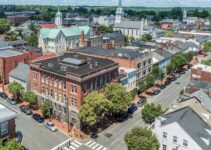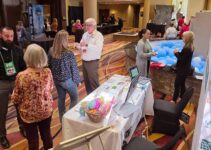“Location, location, location“ has long been the mantra of real estate agents advising their clients on what’s most important when searching for the ideal place to live.
Today a growing number of homeowners are finding that the most desirable locations to call home are in or near wildland areas where nature’s beauty is literally a stone’s throw away. Developers and municipal planners call these regions where nature and communities intersect the Wildlife Urban Interface or WUI. About one third of the current U.S. population lives in the WUI and nearly 43% of new homes are being built there.
A burning concern about expanding into the WUI
Massive wildfires that have been occurring with greater frequency in the western U.S. are a somber reminder of the potential risks of expanding communities into natural environments. Fueled by a progressively warmer climate and imprudent community development, homes and other structures constructed in WUI areas are becoming increasingly prone to wildfires that experts say can burn longer and cause more damage than ever before.
According to a WUI study by Headwaters Economics, U.S., the average fire season in the western U.S. is now 84 days longer than in the 1970s. And from 2000 to 2016, more than 3,000 U.S. communities had a 100+ acre wildfire within 10 miles of town. This new reality has spurred many WUI communities to become more actively involved in implementing land use regulations that can help reduce risks to people and structures in fire-prone WUI areas.
Rising to the challenge
Planners, fire officials and local governments are becoming a frontline defense to managing fire risks in the WUI because their recommendations can directly influence where and how homes are built. Together, they are helping to create safer communities that are more resilient to wildfires that are sparked by nature and human error. Some WUI communities are passing legislation to manage key risk factors such as:
- Structure density and location: Limiting the number of structures allowed in fire risk areas and managing setbacks
- Building and construction materials: Requiring the use of non-combustible or fire resistant materials and surfaces
- Vegetation management: Regular tree thinning, spacing and trimming; removal of any vegetation growing under tree canopies (typically referred to as “ladder fuels”), surface vegetation removal, and brush clearance
- Emergency vehicle access: Constructing turnarounds and emergency access roads, marking of roads, and adding property address markers
- Water supply: Ensuring water sources are adequate and strategically located
- Fire protection: Installation of automatic sprinkler systems, spark arresters, and requiring proper propane tank storage
A coordinated effort
A number of communities are seeking assistance from Community Planning Assistance for Wildfire (CPAW) program. Funded by the U.S. Forest Service and other private foundations, CPAW works with communities of varying sizes and geographical locations across the U.S. to help local stakeholders identify what’s at risk in the WUI and determine ways to address risks through improved land use planning strategies.
Each year, communities voluntarily apply and are competitively selected to participate in the program. If selected, communities receive customized technical consulting services from CPAW’s team of professional land use planners, foresters, risk modelers and researchers who analyze gaps and opportunities for strengthening wildlife policies and regulations.
Ranging from rural counties to large urban areas, CPAW has worked with 30 communities in 13 states.
Wildfires are not just a Western U.S. problem
While wildfires tend to be more common and frequent in the western U.S. many WUI communities in the mid-west, east and southeast are also working with CPAW to address wildfire risks. They include:
Baker County, Florida: Situated in the northeast portion of Florida, the county is characterized by extensive wildland-urban interface (WUI). Nearly the entire population of the county, or 95 percent of the 28,000 residents, live in the WUI.
Bemidji, Minnesota: More than a century ago, one of Minnesota’s greatest disasters occurred in this heavily forested region, burning more than 250,000 acres and killing 450 people. While no fire has since been as destructive, the Green Valley Fire in 2013 helped renew awareness of wildfire danger.
Township of Ocean, New Jersey: Pinelands National Reserve borders the township and is one of the region’s largest land conservation efforts, but also poses a threat because of fire risk. With ongoing residential development pressure, scattered homes, villages, and campgrounds are frequently at-risk.
Learn more about CPAW community projects here.
Is your community considering wildfire legislation? We can help.
We can take you through all the steps to supplement your Code should your community decide to enact new legislation around WUI planning rules and regulations, or update any current laws.
For eCode360™ clients, a good place to start is the Multicode search tool. Use it to browse our database of more than 3,000 eCodes to find similar legislation in nearby communities that you can compare to your local laws, or use as samples for developing new legislation.* General Code is also a proud member of the International Code Council (ICC), an organization that develops model safety codes including regulations for building in the Wildlife Urban Interface. To view ICC’s model code for WUI areas, click here.
*Keep in mind that your Municipal Attorney should always be consulted regarding the legality and appropriateness of the legislation that you’re considering. He or she can help you modify sample legislation to fit your community’s specific criteria.
Sources:
The Wildland-Urban Interface: The Problem, Trends and Solutions; Headwaters Economics, August, 2018
Planning and Wildfire in the Wildland-Urban Interface, American Planning Association, April, 2019
Preparing homes for wildfire, National Fire Protection Association


